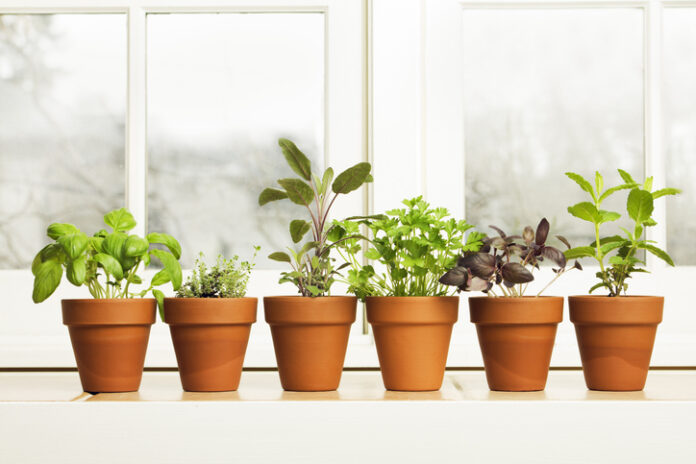As August wanes and the sun begins to drop along the horizon, there is a melancholy that settles deep within me, for I know that summer is ending and darker days are closing in. I am one who relishes the raucous growth of spring in the garden and lounges under the soothing mellow light of summer. There is something about the earth at her pinnacle that feeds my soul and enlightens my senses—the hum of insects and the scent of honeysuckle, the taste of fresh tomatoes and flashes of sun across the pond. I require less sleep, rising to the early morning calls of the grosbeak and not resting until well after dark when the frogs have grown weary of their croaking.
Autumn is forced upon me, and I reluctantly accept her dark mantle, reminding me that there is beauty in decay. Leaves turn to shades of crimson and ochre, and an ethereal mist fills the river valley as the temperature cools. Winter arrives on lonely gusts that test my patience and have me sometimes questioning its promises of spring’s return.
But there is a spark of summer’s fruitfulness that I hold on to during the darkest days of the year. For tucked safely in cold frames and in containers cozied safely under house eaves, leafy greens and bright violas are a reminder that, indeed, life still lingers in winter’s frosty grip. Fresh herbs and vegetables are a welcome treat throughout the winter season, and with a little forethought, anyone can extend the growing season, no matter where they live.
Extending Your Growing Season
The end of the summer typically means the end of fresh herbs and vegetables for those of us who keep a garden in colder regions. But with a little ingenuity, hardy vegetables, herbs, and even flowers can be grown long into the darkest months.
Before you start making plans for the tomato, squash, and peppers that flourished all summer long, let’s take a look at a few basics to make winter gardening easier. The first thing to remember to be a successful winter gardener is to not try to grow your garden as you would in the summer. Look for cold-hardy varieties of plants that do well in your plant hardiness zone. (If you’re not sure what yours is, you can access a hardiness zone map online or talk to someone at your local university extension office.)
Next, we have to start preparing for our winter garden while the sun is still high. Most seeds need to be planted anywhere from late July until late August. I suggest purchasing seeds for your winter garden when you purchase your summer garden seeds and just setting them aside. Plant starts for some winter gardening favorites (such as cabbage) are available from local gardening centers around August.
You may be wondering what kind of plants you can grow for winter. Once again, that will depend on the region you live in and your garden setup. If you live in a warm region (zones 9 to 11), winter gardening can be a very productive time. Peas, lettuce, brassicas, kale, and carrots grow easily with the cooler temperatures. Large, heated greenhouses can also easily extend gardens for those in cooler regions. When I have my greenhouse going, I can extend my tomato production until late November. For those of us who live in regions with mild or wet winters (zones 7 to 8), sometimes just an added layer of straw is enough to protect herbs, leafy greens, and root vegetables all winter long. But for many regions, winter temperatures can drop well below freezing, requiring a little extra care to keep the garden producing.
Gardening Under Cover
Because not everyone has the space, time, or money to set up a large greenhouse for their winter gardens, these easy solutions make it possible for anyone to grow leafy greens, herbs, and root vegetables all season long.
Polytunnels: Working the same as a greenhouse, polytunnels use the sun’s rays to hold the heat and provide a controlled environment for your plants. They are easy to set up and can surprisingly hold a lot of weight (for those who get a lot of snow). They are basically a series of plastic, metal, or wooden hoops used as a frame covered with polythene. They can be as large as a greenhouse or as simple as a low row cover.
Cold Frames: These easy-to-make shelters are basically a wooden box with a transparent lid (like an old window) on a hinge, which plants can be grown in all winter long. If you have zero carpentry skills, they can also be made by surrounding your bed with straw bales or bricks and using polythene stapled to a wood frame as a lid.
Cloches: Popular throughout the nineteenth century, cloches are bell-shaped glass covers used to protect tender plants threatened by frost. Today, glass cloches can be expensive, but plastic ones are available online or at garden centers. They are both inexpensive and reusable. You may also consider making them out of your discarded plastic milk, soda, or juice containers or out of large glass jars. Just place your cloche over a single plant or small group of plants during times of extreme cold.
Winter Garden Fare
Did you know that some vegetables taste better after a good cold snap? Carrots, beets, cabbage, turnips, and kale are sweeter in the winter. Cool-weather crops like root vegetables and leafy greens need that chill to turn starch into sugar and give them their wonderfully sweet taste. Who knows, maybe after you sample winter beets or brussels sprouts, they may become a new family favorite. Here is a list of vegetables you may want to try in your winter garden:
Arugula (Eruca vesicaria): Winter-harvested arugula has a mild, nutty flavor. Direct sow in August for greens all winter long. Try “Roquette” or “Speedy.” Zones 3–11.
Beets (Beta vulgaris): Direct sow in late July for a winter harvest. Try “Winterkeeper” or “Red Ace.” Zones 2–11.
Broccoli (Brassica oleracea var. italica): Sow indoors in July and transplant in your garden in August. Try “Belstar” or “Apollo.” Zones 2–11.
Brussels Sprouts (Brassica oleracea var. gemmifera): Sow indoors in early June for late July transplant in your garden. Try “Franklin” or “Igor.” Zones 3–9.
Cabbage (Brassica oleracea var. capitata): Sow indoors in early June and transplant in the garden in early August. Try “Late Flat Dutch” or “Tundra F1.” Zones 3–10.
Carrots (Daucus carota): Sow directly in your garden in late July to early August. Try “Napoli” or “Nantes.” Zones 3–10.
Kale (Brassica oleracea var. sabellica): Direct sow in mid-July for late fall and winter harvests. Try “Dwarf Siberian” or “Red Russian.” Zones 4–10.
Kohlrabi (Brassica oleracea var. gongylodes): Growing sweeter after the first frost, direct sow from late July to mid-August to enjoy until spring. Try “Superschmelz.”
Leeks (Allium porrum): Direct sow between March and June for winter harvest. Try “Giant Musselburgh” or “Bleu de Solaise.” Zones 5–9.
Lettuce (Lactuca sativa): Direct sow through September for lettuce all winter long. Try “Winter Density” or “Cimmaron.” Zones 3–10.
Mâche (Valerianella locusta): Also called “corn salad,” mâche is a delicate, refreshing green that can be directly sown between August and October to enjoy throughout the winter. Try small-seeded mâche for winter growing. Zones 4–9.
Parsnips (Pastinaca sativa): Sweeter after the first frost, sow in late July. Try “Gladiator F1” or “White Gem.” Zones 2–9.
Radishes (Raphanus sativus): Direct sow in August through September. Try “China Rose” or daikon. Zones 2–11.
Spinach (Spinacia oleracea): Direct sow until the end of October for vitamin-packed greens all winter long. Try “Giant Winter” or “Sunangel.” Zones 2–9.
Turnips (Brassica rapa subsp. rapa): Direct sow in August to enjoy throughout the winter. Try hakurei or “Purple Top White Globe.” Zones 2–9.
Potatoes in a Can
Potato (Solanum tuberosum) tubers are a great cool-weather crop and grow wonderfully in mounds, bags, or containers. It makes sense that they do well as a late fall to early spring vegetable. A quick-growing solution for even the smallest yard is using a garbage can. In late August to early September, drill several drainage holes in a 10-to-20-gallon garbage can and place it in an area that gets full sun. Fill with approximately 6 inches of compost. Leave a few organic potatoes out on the counter to sprout (a process known as chitting), and place 3 to 6 in the soil. Add 3 to 4 inches of composted soil on top and water in. For every 10 inches of growth, add 3 to 4 more inches of compost, remembering not to cover the leaves with soil. Do this until the garbage can is full and your leafy stems are growing above the rim of the can. After potato plants bloom, they will begin to wilt, and you need to stop watering. Once the greens are completely withered, you can dig up your potatoes and enjoy. Full maturity is reached in 70 to 120 days. Try fast-growing varieties like “Cliff Kidney” and “Swift” in zones 3 to 10.
Easy Winter Container Gardens
You don’t have to have a sprawling landscape and yards of row cover to enjoy winter gardening. If you have a porch, balcony, or deck space with southern exposure, you can extend your growing season by using containers. To protect them further from chilly winds and colder temperatures, tuck them close to walls, fences, shrubs, or doorways. Pairing easy-care flowers and herbs with greens such as kale, lettuce, and cabbages makes for a lovely addition to your outdoor spaces, and you’ll have easy access from the kitchen on those deary days one would rather not venture any farther than the back door. When temperatures drop below freezing, you may want to consider using cloches.
Soil requirements for winter containers are different from those for the typical growing season, especially if you live in a rainy climate (like the Pacific Northwest). Soil can become oversaturated, resulting in root rot or mold. Make sure to use a good-draining potting soil or a “soilless” mix. You can buy a soilless mix in any garden center or make it yourself using the following recipe.
Soilless Potting Mix
There are many DIY mixes to fit your garden’s nutritional needs, but this all-purpose blend is great for winter containers.
You will need:
- 2 gallons sphagnum peat moss
- 2 gallons fine compost
- 1 gallon perlite
- 2 tablespoons lime
- ½ cup organic fertilizer (5-5-5 mix)
Mix the components together and use the blend in your containers, beds, or boxes for winter planting.
Recommended Plants for Winter Container Gardens
The following is a selection of flowers, herbs, and vegetables perfect for your winter containers.
Winter-Hardy Flowers for Containers
- Creeping Jenny, Lysimachia nummularia (zones 4–9)
- Coral bells, Heuchera sanguinea (zones 4–9)
- Cyclamen, Cyclamen persicum (zones 4–8)
- Dutch crocus, Crocus vernus (zones 3–8)
- Hellebore, Helleborus ×hybridus (zones 6–9)
- Heather, Calluna vulgaris (zones 5–8)
- Indian chrysanthemum, Dendranthema indicum (zones 5–9)
- Ivy, Hedera helix (zones 4–10)
- Ornamental cabbage, Brassica oleracea (zones 2–11)
- Pansies, Viola, xwittrockiana (zones 6–10)
- Violas, Viola spp. (zones 6–10)
- Winter aconite, Eranthis hyemalis (zones 4–7)
- Winter creeper, Euonymus fortunei (zones 5–9)
Winter-Hardy Vegetables for Containers
- Beets, Beta vulgaris (zones 2–11)
- Cabbage, Brassica oleracea var. capitata (zones 3–10)
- Carrots, Daucus carota (zones 3–10)
- Kale, Brassica oleracea var. sabellica (zones 4–10)
- Lettuce, Lactuca sativa (zones 3–10)
- Radishes, Raphanus sativus (zones 2–11)
Winter-Hardy Herbs for Containers
- Chives, Allium schoenoprasum (zones 3–10)
- Greek oregano, Origanum vulgare (zones 5–9)
- Mint, Mentha spp. (zones 3–8)
- Parsley, Petroselinum crispum (zones 2–11)
- Sorrel, Rumex spp. (zones 5–9)
- Thyme, Thymus vulgaris (zones 5–9)
Wintertide Kitchen Container
This lovely container gives a pop of color to your porch while also providing commonly used herbs and vegetables to brighten your winter meals.
You will need:
- 2 “Red Russian” kale
- 2 red-tinged loose-leaf lettuce
- 1 curly parsley
- 2–3 “Cool Wave Raspberry” pansies
In a large container (24 inches across or more), plant “Red Russian” kale to the back, followed by the lettuce on each side of the parsley situated in the middle, and lovely cascading pansies in the front.
Winter is a time of contemplation and hope. And those vegetables, herbs, and flowers that manage to keep producing long into winter keep that spark of summer alive. I enjoy being able to have fresh vegetables all season long, and I hope this sparks you to carry on a little bit of summer’s fruitfulness through the winter.
Excerpted from Llewellyn’s 2025 Herbal Almanac.
Here’s a quick look at Monica’s latest release,
 Step onto the Garden Path with a Year of Spells, Stories & Soil
Step onto the Garden Path with a Year of Spells, Stories & Soil
Dig into your Witchcraft with month-by-month gardening guidance for flowers, herbs, vegetables, trees, and more. Featuring dozens of spells, charms, and activities, this hands-on book helps you select, grow, and harvest the best plants for your region and shows you how to use them in your magickal practice.
Monica Crosson devotes three chapters to each month, sharing both practical and magickal tips on timely garden tasks. Her inviting collection blooms with stories, recipes, and crafts as well as correspondences for stones, colors, animals, zodiac signs, and more.
Deepen your connection to Mother Nature with thirteen Celtic tree month full moon rituals. Revel in the rich folklore, sabbat celebrations, and garden-based deities. Whatever hardiness zone you hail from, A Year in the Enchanted Garden will nurture your love of plants and guide you through growing your most plentiful garden yet.
ABOUT THE AUTHOR:
Monica Crosson (Concrete, Washington) is a Master Gardener who has taught gardening through her local Washington State University’s extension office for more than twenty-five years. She has been a practicing Witch and educator for over thirty years and is a member of Evergreen Coven. Monica is the author of The Magickal Family and is a regular contributor to magazines such as Enchanted Living and Witchology. Visit her at AuthorMonicaCrosson.com.
COPYRIGHT (2024) Llewellyn Worldwide, Ltd. All rights reserved.






